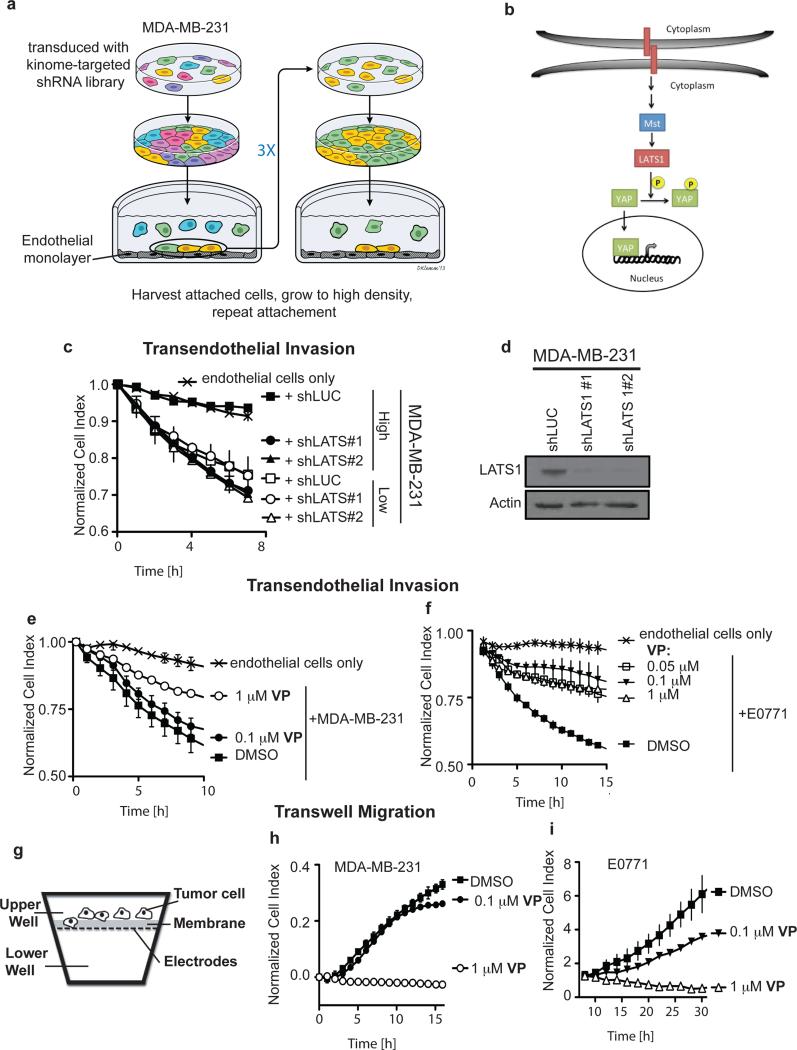Figure 3.
LATS1-YAP signaling controls cancer cell invasiveness in vitro. (a) Schematic of the functional screen for drivers of endothelial monolayer invasion. Cancer cells were transduced with a kinome-wide shRNA library and grown to high density to render the population non-invasive. Over three rounds cells were selected for endothelial attachment and invasion. (b) Schematic of the Hippo pathway in which LATS1 phosphorylates and inhibits YAP function. (c) Transendothelial invasion of low and high density cells with LATS1 knocked down. (d) LATS1 western blot of MDA-MB-231 cells infected with shLuc or shLATS1. Actin was used as a loading control. (e, f) The effect of verteporfin (VP), a YAP activity inhibitor, on MDA-MB-231 and E0771 cells invading an endothelial monolayer in the ECIS assay (see Figure 1a). (g) Schematic of a transwell Boyden-chamber assay to monitor cell migration. The chambers are separated by a porous membrane carrying an electrode array facing the lower chamber. Cells are added to the top chamber, and migrating cells are detected by ECIS. (h, i) The effect of VP on transwell migration by MDA-MB-231 and E0771 cells.

